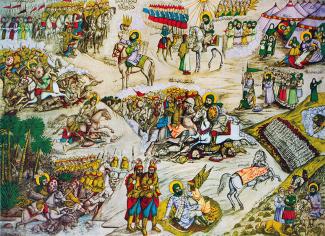Muslims
Islam’s age-old schism
 picture-alliance/CPA Media
picture-alliance/CPA Media
One group of his disciples insisted that leadership of his faith should stay in his family. In their eyes, Ali ibn Abi Talib, Mohammed’s son-in-law, was to be the heir. Others believed that the best-qualified person should be the leader. The schism soon caused violence and eventually proved permanent. The first group spawned Shia Islam and the second Sunni Islam.
In principle, either denomination denies the other’s legitimacy. Some Sunnis even consider Shias to be infidels who deserve death. Nonetheless, communities of both versions of the faith have lived together peacefully in many places, with hostilities only erupting in exceptional circumstances. Moreover, the pilgrimage to Mecca has been practiced by both denominations for centuries, mostly without disruption. On the other hand, such differences can serve political purposes.
Most Muslims are Sunnis, but Shias are the majority in Iran, Bahrain, Azerbaijan and Lebanon. Large Shia communities exist in Iraq, Pakistan, India and even Saudi Arabia.
It is noteworthy, moreover, that neither Shia nor Sunni Islam are monolithic denominations (see Blog post by Hans Dembowski). There are several different Shia sects, of which the Twelver Imam sect is the most important. It is the dominant faith in Iran. Sunni Islam has spawned a variety of different legal schools, as well as fundamentalist Wahhabism, which is the doctrine of Saudi Arabia. (D+C/E+Z)
